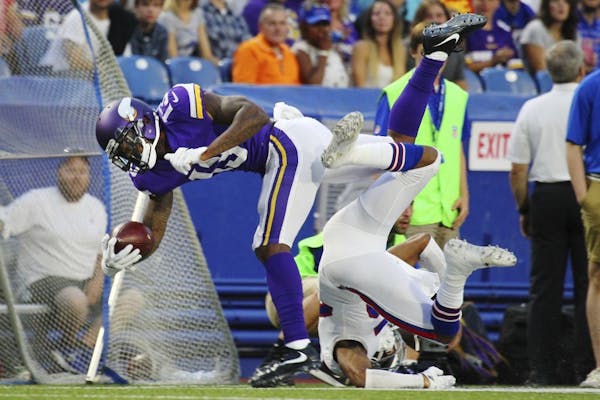NFL teams tend to be constructed — based on philosophy, salary structure and available players — in such a way that they are stronger on one side of the ball than the other.
We've seen ample evidence of that in Vikings history, particularly in the last 25 seasons spanning Dennis Green's hiring in 1992 to the present.
Green's first team in 1992 had balance — fourth in the NFL in points scored and seventh in points allowed — and rode that to an 11-5 record (followed by a disappointing home playoff loss to the Bears, the first Vikings game I ever saw in person). Soon, the offense was outpacing the defense (two top-10 finishes in the next five seasons, with zero for the defense). With the addition of Randy Moss in 1998, the Vikings had one of the best offense's in NFL history and a solid defense that finished sixth in points allowed. The offense kept flowing for Green, but the defense faltered and played a big role in the slide that got him fired in 2001.
The imbalance toward offense continued under Mike Tice, with Daunte Culpepper and Moss putting up big numbers while the defense couldn't get its act together (the Vikings never finished better than 19th in points allowed under Tice).
When Brad Childress took over, he proclaimed offensive dominance but it was the defense that propped up early versions of his teams. Finally, by 2009, things evened out and the Vikings had capable units on both sides of the ball — finishing second in points scored and 10th in points allowed during Brett Favre's magical year.
Then the offense quickly fell apart and Childress was fired. Leslie Frazier took over and produced defenses that finished 31st and 32nd in the league among his three full seasons.
Mike Zimmer was brought in to fix that, and he did (fifth in points allowed two years ago, sixth last year) — but now the offense is the unit languishing in the land of mediocrity (or worse).
Again, personnel has tons to do with this. The Vikings loaded up on young talent in recent drafts and had more success picking those players than the ones they chose on offense. Zimmer had a young quarterback his first two years, and then that young quarterback suffered a devastating knee injury before the 2016 season. The transition from Teddy Bridgewater to Sam Bradford, coupled with injuries, poor decisions and poor play on the offensive line, left the Vikings with a massive imbalance between defense and offense.
Thursday's preseason opener was just that: the first of four games that don't count (the Vikings won 17-10 at Buffalo, in case you missed it). But if you were looking for evidence that the gap between the two units might be closing, giving the Vikings a real chance to contend in 2017, you were disappointed.
The first unit offense had three drives that produced a total of 24 yards and no points. The offense has some talent, but it's hard to envision this group being anything better than average when you evaluate the offensive line and skill positions objectively.
The good news is the defense should be a top-10 unit for several years to come and buy the offense some time to finally catch up. How important is it to have both sides going strong?
Well, the Vikings have only had a top-10 scoring offense and defense in three of those 25 years since Green took over: 2009 (12-4, NFC title game), 1998 (15-1, NFC title game) and 1992 (11-5, division champs). Those are the first, second and tied for third best regular-season records for the Vikings in that span.
This season will be all about how much the offense can close the gap. That will determine what kind of timeline the Vikings are on — if at all — to truly compete for a championship.
Thursday was not a good sign, but the larger sample size is yet to come.

Can things get better for the Wild after a disappointing season?
NBA Playoffs 2024: Before Game 1s on Saturday, a pair of Game 7-type matchups on Friday

As baseball's elbow injuries rise, Twins pitchers understand the risks
Paris Olympics opening ceremony on river Seine will last nearly 4 hours

